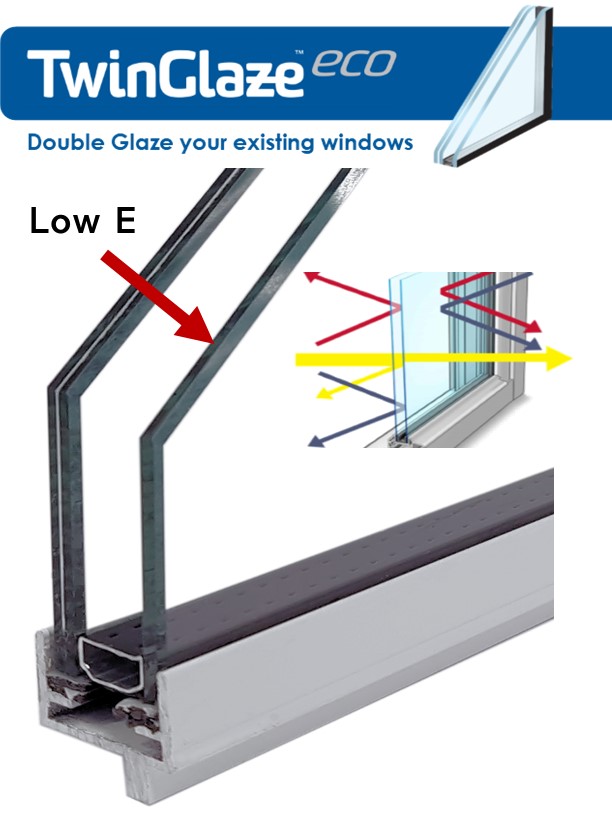All Categories
Featured
Table of Contents
Insulated Glass Unit – Igu in Cottesloe WA
That window can transmit more solar heat in winter than in summertime. A west-facing window on a summer's afternoon has an angle of occurrence from near 0 as much as 30 with a large reliable location of solar radiation. A north-facing window, in summer, has a high angle of occurrence and a low effective location of solar radiation, so can send less heat than a west-facing one.

You can rapidly and easily improve the thermal efficiency of your home by replacing your windows. There are thousands of types of glass and frames to pick from.
Why Does Double Glazing Help To Keep Us Cool In Summer? in Victoria Park WA
There are various kinds of glass items to select from. Single glazing uses a single pane of glass. Single glazing with clear glass is not really efficient when it pertains to heat loss or gain. To enhance performance, you can use single glazing with a more energy-efficient kind of glass such as low emissivity (low-e) glass.
The energy efficiency of IGUs likewise depends on: the residential or commercial properties of each layer of glass. Different glass types (for example, clear and low-e glass) can be put together in an IGU.
Buy Double Glazed Upvc Sliding Doors In Sydney in High Wycombe Western Australia

IGU cavities can be filled with air or a more inert, low-conductivity gas such as argon the width of the cavity. Cavity density is generally 6 to 18mm. Wider cavities provide lower (better) U worths, with 12mm normally accepted as the favored space how well the cavity is sealed. Cavities must be dry and well sealed to prevent wetness getting in.
If argon is set up to the cavity in place of air, moisture is dependably excluded the level of desiccant (drying agent). The spacer (metal or polymer strip) that separates the glass layers consists of a desiccant to soak up any moisture. Insufficient desiccant may cause moisture to condense on the glass surface area in cold conditions, minimizing thermal performance.
Why Does Double Glazing Help To Keep Us Cool In Summer? in Beechina WA
IGUs can provide better energy performance for all climates, specifically in heated and air-conditioned houses. Cross-section detail of single, double and triple-glazing systems Low emissivity glass (commonly understood as low-e glass) lowers heat transfer. Low-e glass might be either high or low transmission: High transmission low-e glass has a coating that enables daytime from the sun to enter your home to attain great solar heat gain, but minimizes the amount of the long wavelength infrared heat that can leave back through the window.
Low-e glass has either a pyrolytic coating or a vacuum-deposited thin movie metal finishing. Pyrolytic coverings are resilient and can be utilized for any glazing; vacuum-deposited finishes are soft and are just utilized within IGUs. Low-e finishings can significantly enhance both U worth and SHGC; however, they should be utilized correctly or they will either deteriorate or fail to carry out as needed.
What Is The Best Glazing For My Home? - Part 2 in Merriwa WA
Low-e finishings can be utilized in mix with clear, toned or reflective glass. Low-e finishes on glazing can decrease heat transfer where required Picture: Department of Market, Science, Energy and Resources Toned glass has colouring additives consisted of during manufacture. It is available in numerous colours, generally bronze, grey, blue and green.
Table of Contents
Latest Posts
Does Double Glazing Keep Heat Out in South Fremantle Perth
Which Double Glazed Windows Are Best For Summer? in Kalamunda WA
Why Install Stunning Double Glazing Windows During Summer? in Hamilton Hill Perth
More
Latest Posts
Does Double Glazing Keep Heat Out in South Fremantle Perth
Which Double Glazed Windows Are Best For Summer? in Kalamunda WA
Why Install Stunning Double Glazing Windows During Summer? in Hamilton Hill Perth